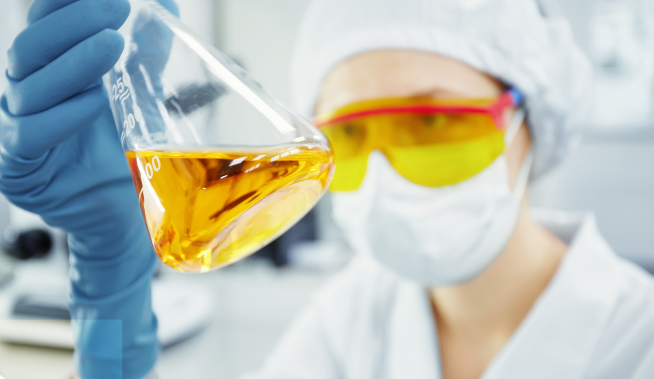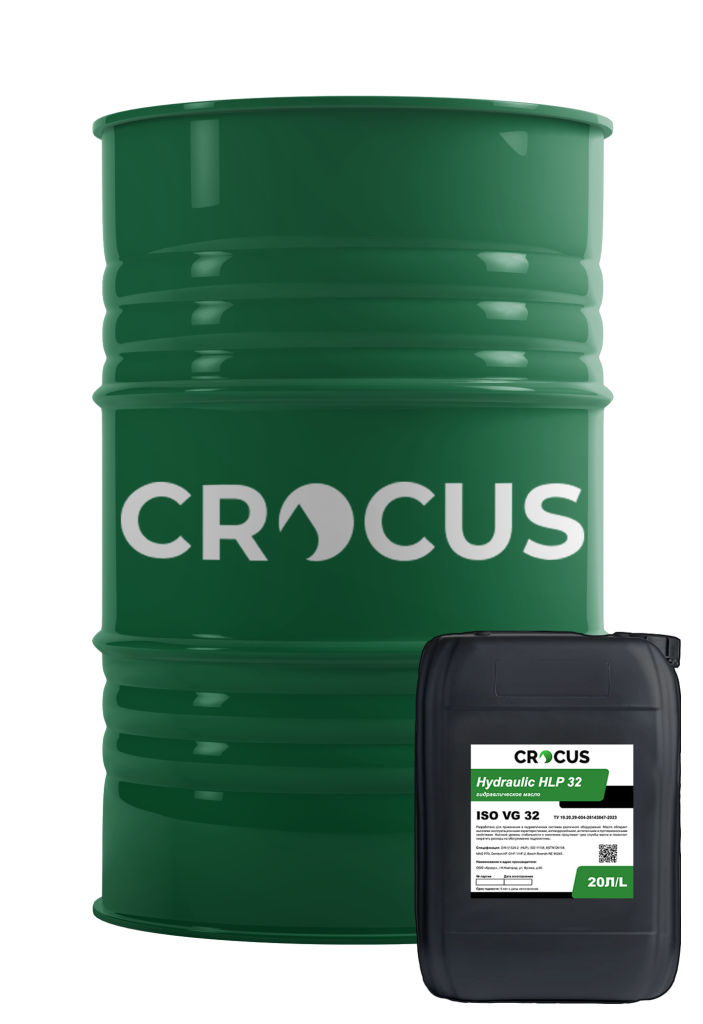Quality control
The presence of its own laboratory allows for multi-stage monitoring of production processes and guarantees first-class quality of the lubricants produced.
The high-tech and modern laboratory for the analysis of petroleum products of LLC "Krokus" was established in 2021. The laboratory is equipped with modern calibrated measuring instruments, certified testing equipment, and auxiliary equipment corresponding to the research objects and the list of determined indicators. The laboratory staff is composed of specialists with the appropriate professional training and experience in conducting tests. Laboratory employees continuously improve their professional level, mastering new testing methods and modern laboratory equipment.
The laboratory's tasks include:
- — Quality control of incoming raw materials
- — Intermediate control of stages of the production process
- — Quality control of finished products
- — Scientific research on the development of new products
- — Research on the implementation of new formulations and production technologies.
Laboratory services:
|
Indicator name |
Testing method |
|
Kinematic viscosity |
GOST 33 |
|
ASTM D 445 |
|
|
Acid number |
GOST 5985 |
|
GOST 5985 |
|
|
GOST 31933 |
|
|
GOST 11362 p. 10.2 |
|
|
Corrosion test |
GOST 2917 |
|
Corrosive action on steel plates |
GOST 25821 |
|
Viscosity stability after oil sonication in ultrasonic equipment |
GOST 6794 |
|
Oil film quality |
GOST 6794 |
|
Content of water-soluble acids and alkalis |
GOST 6307 |
|
Mass fraction of mechanical impurities |
GOST 10577 |
|
Change in mass of rubber after being kept in oil |
GOST 9.030 |
|
Mass fraction of water |
GOST 2477 |
|
Flash point determined in an open cup |
GOST 4333 |
|
ASTM D 92 |
|
|
Pour point |
GOST 20287 |
|
Density |
GOST 3900 |
|
GOST R 51069 |
|
|
Tribological characteristics determined on a four-ball tribometer: |
GOST 9490 |
|
- wear rate (Di) |
|
|
- flash point index (Iz) |
|
|
- scuffing load (Rs) |
|
|
- critical load (Rk) |
|
|
Viscosity index |
GOST 25371 |
|
ASTM D 2270 |
|
|
Acid number |
GOST 5985 |
|
Ash content |
GOST 1461 |
|
Thermo-oxidative stability: |
GOST 11063 |
|
- mass fraction of sediment in oxidized oil |
|
|
- change in viscosity |
|
|
Oxidation stability: |
GOST 981 |
|
- mass fraction of sediment |
|
|
- acid number |
|
|
Thermo-oxidative stability and corrosive activity: |
GOST 20944 |
|
- kinematic viscosity after oxidation |
GOST 33 |
|
- acid number after oxidation |
GOST 5985 |
|
Mass fraction of zinc |
GOST 13538 |
|
Mass fraction of barium |
|
|
Mass fraction of calcium |
|
|
Mass fraction of mechanical impurities |
GOST 6370 |
|
Mass fraction of mechanical impurities |
GOST 25821 |
|
Mechanical impurities visually |
TU 6-00-5763445-10-89 |
|
Content of mechanical impurities |
GOST 6479 |
|
Sulfated ash |
GOST 12417 |
|
Water content |
GOST 1547 |
|
Odor |
Organoleptically |
|
Flash point determined in a closed cup |
ASTM D 93 |
|
Cleanliness class |
GOST 17216 |
|
Thermo-oxidative stability. Properties of oil after oxidation: |
GOST 23797 |
|
- kinematic viscosity after oxidation, at temperature: |
|
|
- 100 ºC |
|
|
- 50 ºC |
|
|
- minus 15 ºC |
|
|
- minus 40 ºC |
|
|
- acid number after oxidation |
|
|
- mass fraction of sediment after oxidation |
|
|
- corrosiveness on metal plates |
|
|
Thermo-oxidative stability and corrosive activity at 200 ºC. Properties of oil after oxidation: |
GOST 20944 |
|
- kinematic viscosity after oxidation, at temperature: |
|
|
- 20 °C |
|
|
- 50 °C |
|
|
- minus 60 °C |
|
|
- acid number after oxidation |
|
|
- corrosiveness on metal plates |
|
|
Alkalinity number |
GOST 11362 |
|
ASTM D 2896 |
|
|
Foaming / Foam stability |
GOST 25821 |
|
ASTM D 892 |
|
|
Tendency to foam formation / Foam stability |
GOST 23652 p. 5.5 |
|
Demulsifying properties: |
GOST ISO 6614 |
|
- emulsion separation time |
|
|
- volume of layers: |
|
|
- oil |
|
|
- water |
|
|
- emulsion |
|
|
Saponification number |
GOST 17362 |
|
pH value |
GOST 25821 |
|
GOST 22567.5 |
|
|
pH of emulsion |
GOST 6243 |
|
Emulsion stability |
GOST 5702 |
|
Acid number |
GOST 31933 |
|
Flash point determined in a closed cup |
GOST 6356 |
|
Crystallization temperature |
GOST 28084 |
|
Color on CN colorimeter |
GOST 20284 |




